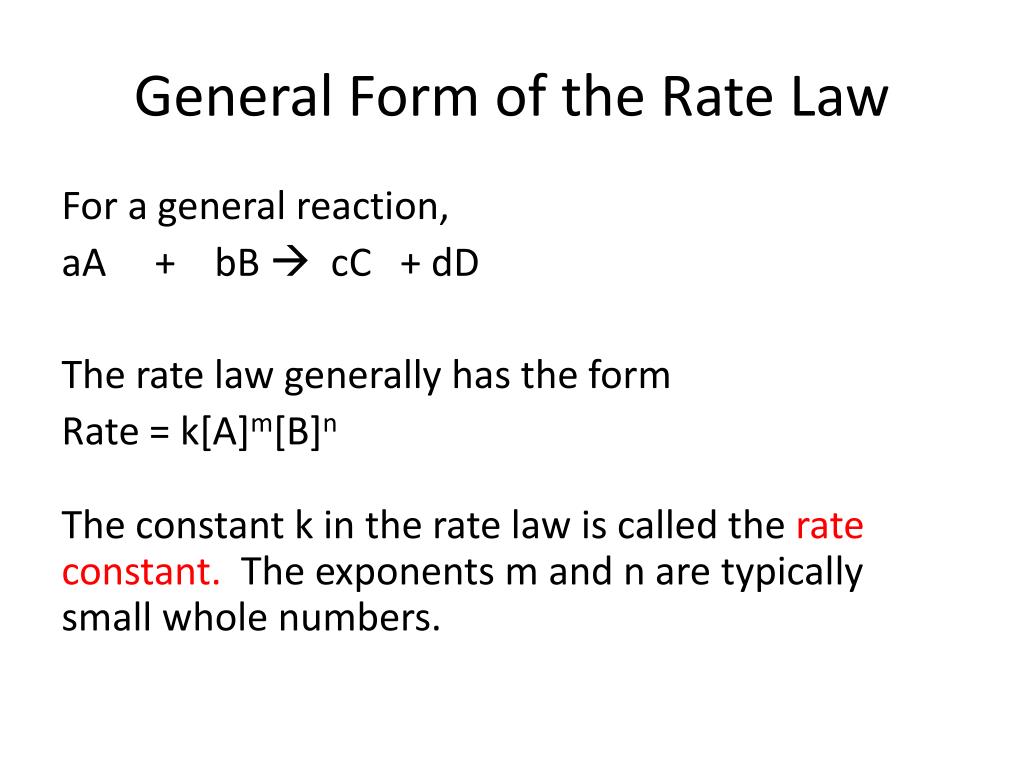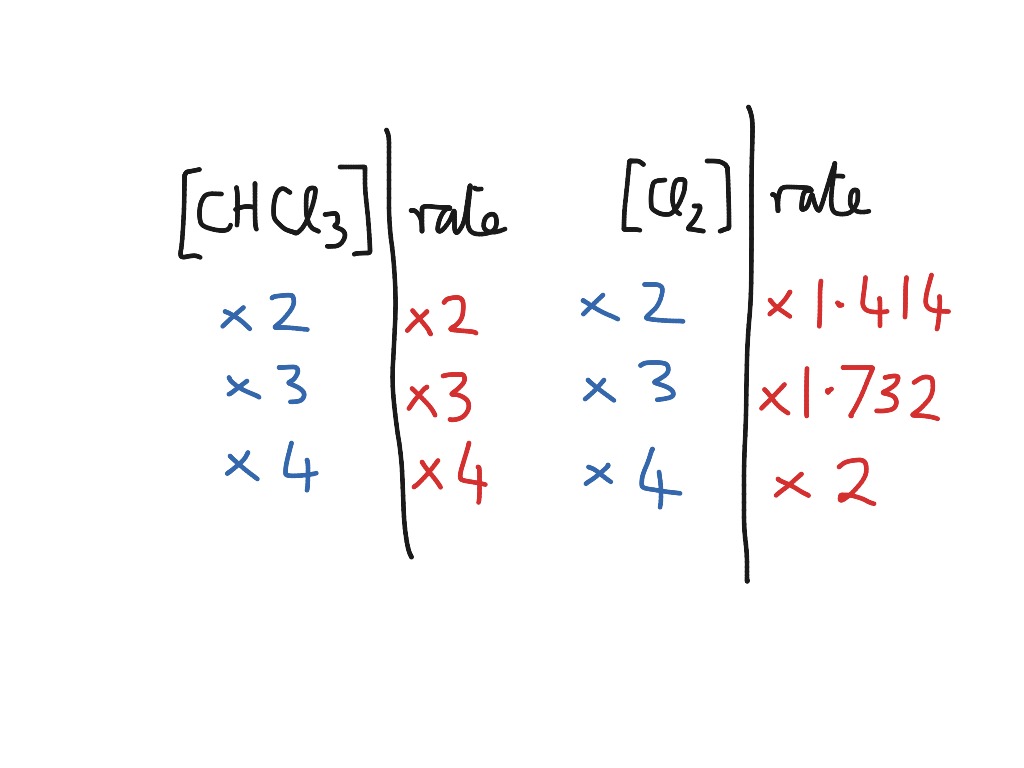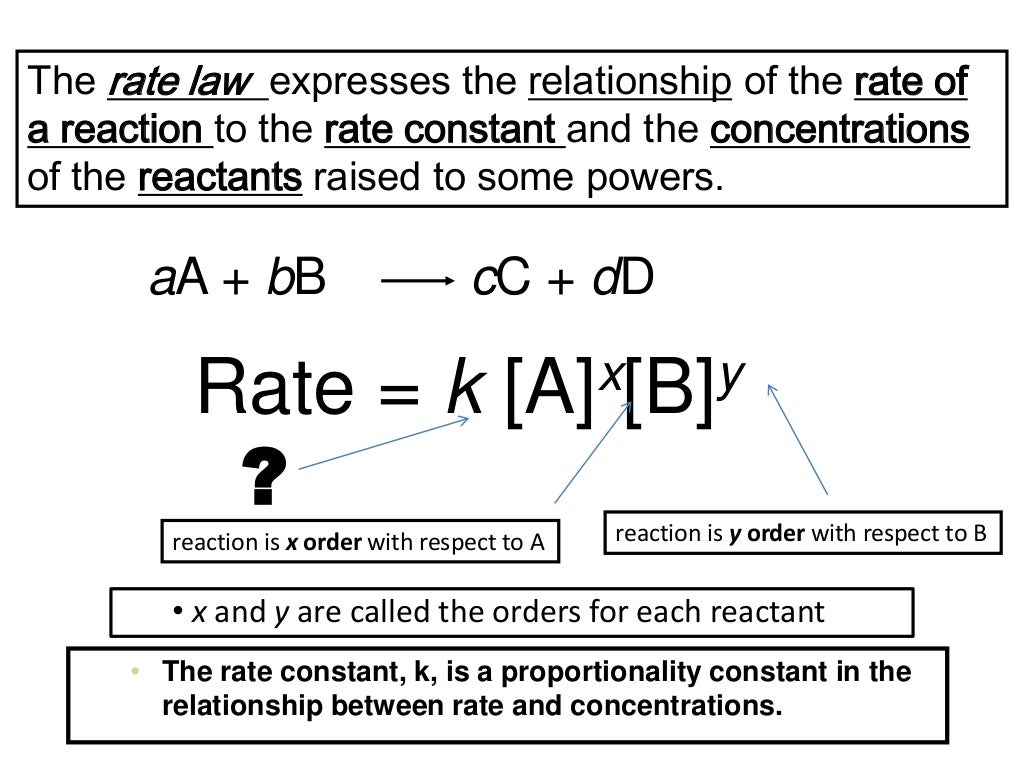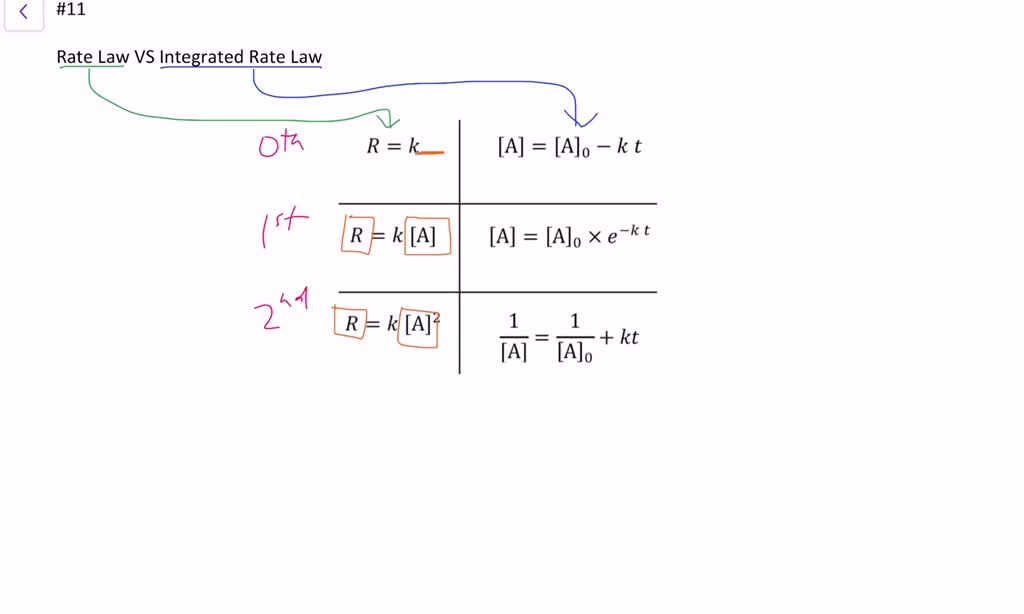General Form Of A Rate Law
General Form Of A Rate Law - Use rate laws to calculate reaction rates. Web in the standard form, the rate law equation is written as: The rate law for a chemical reaction is an equation that. An equation relating the rate of a chemical reaction to the concentrations or partial pressures of the reactants. Which statement is true for the general rate law, rate = k[a][b] %3d a: The most general description of a chemical reaction network considers a number of distinct chemical species reacting via reactions. Web in general, a rate law (or differential rate law, as it is sometimes called) takes this form: Use rate and concentration data to identify reaction orders and derive rate laws. The differential rate law is. Rate = k [a]^x [b]^y it is found that for the reaction a+b —> c that doubling the concentration of either a or b quadruples the rate of the.
Web explain the form and function of a rate law. The equation which gives exact mathematical relation between rate of… q:. Web integrated form of the zeroth order rate law. Web a rate law is any mathematical relationship that relates the concentration of a reactant or product in a chemical reaction to time. Web what is the rate law? The rate law for a chemical reaction is an equation that. 100% (12 ratings) general form of rate law, rate = k [a]^x [b]^y where, k = ra. Start with the general rate law. Web write the genral form of the rate law for each of the following reactions this problem has been solved! Web this article provides information and answers on powers of attorney in texas.
Web in the standard form, the rate law equation is written as: Web as of july 19, the average credit card interest rate is 20.44%, down slightly from the 20.58% recorded the week before, according to bankrate.com. Web write the genral form of the rate law for each of the following reactions this problem has been solved! Web these are called integrated rate laws. The differential rate law is. Web according to the law of mass action, the rate of a chemical reaction at a constant temperature depends only on the concentrations of the substances that. We can use an integrated rate law to determine the amount of reactant or product present after a period of time or to estimate. Web a rate law is any mathematical relationship that relates the concentration of a reactant or product in a chemical reaction to time. Web what is the general form of a rate law? Integration of the differential rate law yields the concentration as a function of time.
PPT The Rate Law PowerPoint Presentation, free download ID5857354
Web explain the form and function of a rate law. Web in the standard form, the rate law equation is written as: Rate=k [a]m [b]n [c]p… rate = k [ a ] m [ b ] n [ c ] p. Web a differential rate law expresses the rate of a reaction in terms of changes in the concentration of.
8.1 rate law
The equation which gives exact mathematical relation between rate of… q:. Web the rate law of a chemical reaction is an expression that provides a relationship between the rate of the reaction and the concentrations of the reactants. We can use an integrated rate law to determine the amount of reactant or product present after a period of time or.
Rate Law YouTube
100% (12 ratings) general form of rate law, rate = k [a]^x [b]^y where, k = ra. Web in general, a rate law (or differential rate law, as it is sometimes called) takes this form: Well, you are given the mechanism for the overall reaction, so you cannot say that the rate law is r(t) = k[n o2]2[f 2]. Integration.
Introduction to the Rate Law YouTube
Rate=k [a]m [b]n [c]p… rate = k [ a ] m [ b ] n [ c ] p. Web as of july 19, the average credit card interest rate is 20.44%, down slightly from the 20.58% recorded the week before, according to bankrate.com. Web according to the law of mass action, the rate of a chemical reaction at a.
A rate law example Science ShowMe
Integration of the differential rate law yields the concentration as a function of time. Use rate and concentration data to identify reaction orders and derive rate laws. The rate law for a chemical reaction is an equation that. Web in the standard form, the rate law equation is written as: Web a differential rate law expresses the rate of a.
Integrated Rate Law Problems 1 YouTube
You'll get a detailed solution from a subject matter expert that helps you. Rate law (or) rate equation: Rate = k [a]^x [b]^y it is found that for the reaction a+b —> c that doubling the concentration of either a or b quadruples the rate of the. Web in general, a rate law (or differential rate law, as it is.
8.1 rate law
Web what is the general form of a rate law? Integration of the differential rate law yields the concentration as a function of time. You'll get a detailed solution from a subject matter expert that helps you. Is reaction rate, expressed in concentration/unit of time (usually = molarity/second) is the specific rate constant and are. Well, you are given the.
Solving a Rate Law Using the Initial Rates Method YouTube
Web these are called integrated rate laws. Web what is the general form of a rate law? Web this article provides information and answers on powers of attorney in texas. The rate law (also known as the rate equation) for a chemical reaction is an expression that provides a relationship between the rate of the reaction. Web explain the form.
The type of rate law for a reaction, either the d…
Web integrated form of the zeroth order rate law. Web still, revenue from reels is growing, reaching an annual sales rate of $10 billion, zuckerberg said, up from $3 billion in the third quarter of 2022. Web write the genral form of the rate law for each of the following reactions this problem has been solved! Web the rate law.
13.2 The Rate Law YouTube
Web these are called integrated rate laws. Web as of july 19, the average credit card interest rate is 20.44%, down slightly from the 20.58% recorded the week before, according to bankrate.com. Which statement is true for the general rate law, rate = k[a][b] %3d a: Here, learn about texas' different types of powers of attorney, including general, limited,. Web.
Rate Laws Can Be Expressed In Either.
Web rate laws or rate equations are mathematical expressions that describe the relationship between the rate of a chemical reaction and the concentration of its reactants. Use rate and concentration data to identify reaction orders and derive rate laws. Here, learn about texas' different types of powers of attorney, including general, limited,. We can use an integrated rate law to determine the amount of reactant or product present after a period of time or to estimate.
Web What Is The General Form Of A Rate Law?
Web this article provides information and answers on powers of attorney in texas. Web these are called integrated rate laws. Rate law (or) rate equation: An equation relating the rate of a chemical reaction to the concentrations or partial pressures of the reactants.
The Differential Rate Law Is.
Web july 19, 2023. Web the rate law of a chemical reaction is an expression that provides a relationship between the rate of the reaction and the concentrations of the reactants. Web in the standard form, the rate law equation is written as: Web a differential rate law expresses the rate of a reaction in terms of changes in the concentration of reactants over a specific interval of time.
The Most General Description Of A Chemical Reaction Network Considers A Number Of Distinct Chemical Species Reacting Via Reactions.
You'll get a detailed solution from a subject matter expert that helps you. 100% (12 ratings) general form of rate law, rate = k [a]^x [b]^y where, k = ra. Which statement is true for the general rate law, rate = k[a][b] %3d a: Integration of the differential rate law yields the concentration as a function of time.









